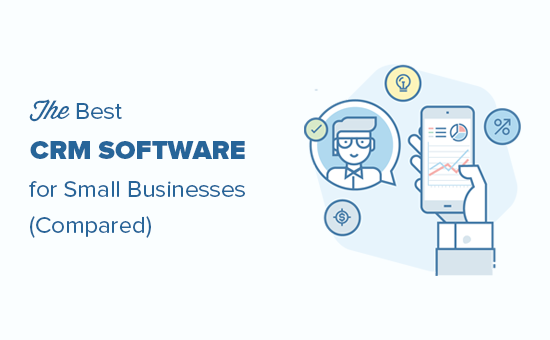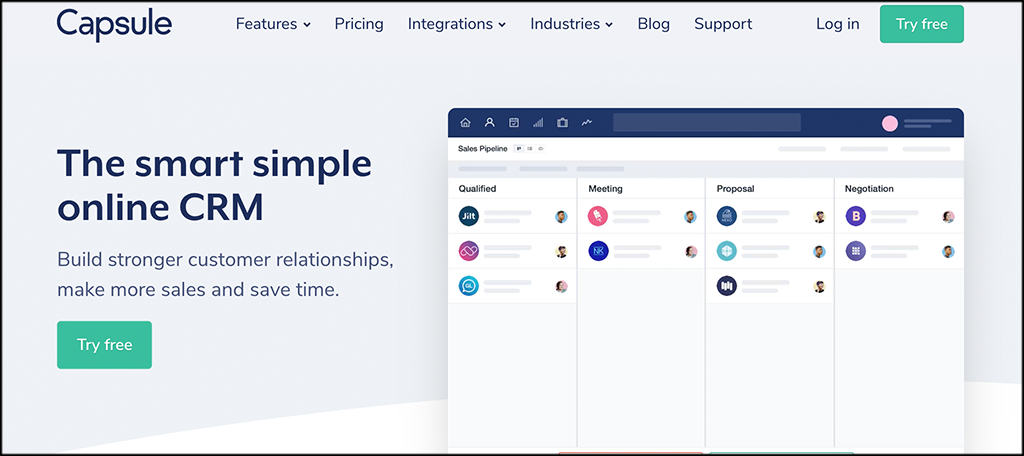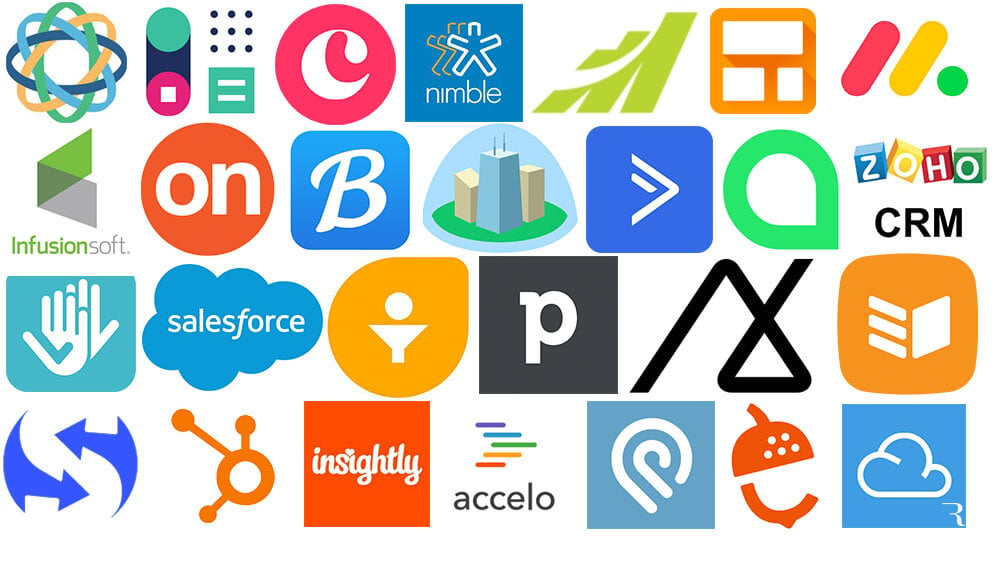
Introduction: Why Small Artists Need a CRM
Being a small artist is a beautiful, challenging, and often chaotic endeavor. You’re not just creating art; you’re also a business owner, a marketer, a salesperson, and a customer service representative all rolled into one. Juggling these roles can be overwhelming, especially when you’re trying to build a sustainable career and connect with your audience. This is where a Customer Relationship Management (CRM) system comes in. A CRM isn’t just for big corporations; it’s a powerful tool that can revolutionize how small artists manage their businesses, build relationships, and ultimately, sell more art.
Think of a CRM as your central hub for everything related to your art business. It’s where you store contact information, track your interactions with potential buyers, manage your sales pipeline, and even automate some of your marketing efforts. Without a CRM, you might be relying on spreadsheets, sticky notes, and a scattered email inbox – a recipe for missed opportunities and lost connections. With a CRM, you can streamline your processes, stay organized, and focus on what you love most: creating art.
What is a CRM and Why Does it Matter to Artists?
At its core, a CRM is a software system that helps you manage your interactions with current and potential customers. For artists, this translates to managing relationships with collectors, galleries, art consultants, and anyone else involved in your art journey. Here’s why it’s crucial:
- Centralized Contact Management: No more scattered contact information. Store all your contacts, including their details, preferences, and history of interactions, in one place.
- Improved Organization: Keep track of sales, commissions, exhibition opportunities, and deadlines with ease.
- Enhanced Communication: Send targeted emails, newsletters, and personalized messages to different segments of your audience.
- Better Relationship Building: Understand your audience’s needs and preferences, allowing you to build stronger, more meaningful relationships.
- Increased Sales: By nurturing leads and managing your sales pipeline effectively, you can increase your chances of making sales and growing your business.
- Time Savings: Automate repetitive tasks, freeing up your time to focus on creating art and other important aspects of your business.
In essence, a CRM for artists is a tool designed to help you manage every aspect of your interactions with people interested in your work, from the initial contact to the final sale and beyond. It is about fostering relationships, not just transactions. It is about understanding your audience and tailoring your approach to resonate with each individual.
Key Features to Look for in a CRM for Artists
Choosing the right CRM can feel daunting, but focusing on the features that are most relevant to your specific needs will simplify the process. Here are some essential features to consider:
Contact Management
This is the foundation of any CRM. It should allow you to:
- Store detailed contact information: names, addresses, phone numbers, email addresses, and social media profiles.
- Add custom fields: to track specific information relevant to your art business, such as art preferences, purchase history, or gallery affiliations.
- Segment contacts: create groups based on different criteria, such as location, interest in a particular style, or collector status.
Sales Pipeline Management
Track your sales process from lead generation to closing the deal. Look for features like:
- Lead tracking: to monitor potential sales opportunities.
- Deal stages: to visualize the progress of each sale.
- Task management: to set reminders for follow-ups, meetings, and other actions.
- Reporting: to analyze your sales performance and identify areas for improvement.
Email Marketing Integration
Seamlessly connect your CRM with your email marketing platform to:
- Send targeted email campaigns: to different segments of your audience.
- Track email performance: to see who opened your emails, clicked on links, and made purchases.
- Automate email sequences: to nurture leads and stay top-of-mind with your audience.
Gallery and Exhibition Management
If you work with galleries or participate in exhibitions, look for features that help you:
- Manage gallery contacts and communications.
- Track exhibition details, including dates, locations, and inventory.
- Generate consignment reports and track sales from galleries.
Reporting and Analytics
Gain insights into your business performance with features like:
- Sales reports: to track revenue, expenses, and profitability.
- Contact activity reports: to see how you’re interacting with your audience.
- Marketing reports: to measure the effectiveness of your marketing efforts.
Mobile Accessibility
Being able to access your CRM on the go is crucial for artists who are constantly on the move. Look for a CRM with a mobile app or a responsive design that works well on mobile devices.
Integration with Other Tools
Consider how the CRM integrates with other tools you use, such as your website, accounting software, and social media platforms. Integration can streamline your workflow and save you time.
Top CRM Systems for Small Artists
Now, let’s delve into some of the best CRM options specifically tailored for small artists. Each has its own strengths, so consider your specific needs and budget when making your choice. Remember, the best CRM is the one that you will actually use.
1. HubSpot CRM
Best for: Free and comprehensive CRM, good for beginners and artists who want a powerful, yet accessible, option.
Key Features:
- Free forever plan with unlimited users and contacts.
- Contact management, deal tracking, and task management.
- Email marketing integration with up to 2,000 free emails per month.
- Reporting and analytics dashboards.
- User-friendly interface, making it easy to learn and use.
- Integration with popular apps like Gmail, Outlook, and social media.
Pros: Free plan offers a lot of functionality. Excellent for those just starting with CRM. Easy to learn and use. Great customer support and resources.
Cons: The free plan has limitations on some features. More advanced features require paid upgrades.
Why it’s great for artists: HubSpot CRM provides a robust free option that allows artists to manage their contacts, track their sales pipeline, and send targeted emails without breaking the bank. Its user-friendly interface makes it accessible for artists of all technical skill levels.
2. Zoho CRM
Best for: Artists looking for a more customizable and feature-rich CRM, particularly those who want to integrate with other Zoho apps.
Key Features:
- Contact management, sales force automation, and marketing automation.
- Customizable dashboards and reports.
- Workflow automation to streamline repetitive tasks.
- Integration with Zoho’s suite of apps, including email, accounting, and project management.
- Mobile apps for iOS and Android.
Pros: Extensive features and customization options. Excellent for businesses that want to automate complex processes. Strong integration with other Zoho apps.
Cons: Can be overwhelming for beginners due to its complexity. Some advanced features require paid upgrades.
Why it’s great for artists: Zoho CRM offers a wide range of features that enable artists to manage every aspect of their business, from contact management to sales and marketing. The customization options allow artists to tailor the CRM to their specific needs and workflows. The integration with other Zoho apps provides a comprehensive solution for managing all aspects of their art business.
3. Pipedrive
Best for: Artists who prioritize sales and want a CRM that focuses on their sales pipeline.
Key Features:
- Visually intuitive sales pipeline management.
- Contact management and deal tracking.
- Email integration and automation.
- Reporting and analytics focused on sales performance.
- Mobile apps for iOS and Android.
Pros: Easy to understand and use. Excellent for managing sales pipelines. Strong focus on sales and lead generation.
Cons: Less feature-rich than other CRM options. Might not be suitable for artists who need extensive marketing automation capabilities.
Why it’s great for artists: Pipedrive excels at helping artists manage their sales pipeline and close deals. Its visual interface makes it easy to track the progress of potential sales and stay on top of follow-ups. This is perfect for artists who are actively selling their work and want to maximize their sales efforts.
4. Freshsales
Best for: Artists who want a CRM with built-in phone and chat functionality, and those who want a user-friendly experience.
Key Features:
- Contact management, lead scoring, and deal tracking.
- Built-in phone and chat functionality.
- Email integration and automation.
- Reporting and analytics.
- User-friendly interface.
Pros: Easy to learn and use. Excellent for customer communication. Affordable pricing plans.
Cons: Limited free plan. Some advanced features require paid upgrades.
Why it’s great for artists: Freshsales provides a user-friendly experience with built-in phone and chat functionality, making it easy for artists to communicate with their audience and provide excellent customer service. This is especially beneficial for artists who rely on direct communication with their collectors and clients.
5. HoneyBook
Best for: Artists who want a CRM specifically designed for creative professionals, focusing on project management and client communication.
Key Features:
- Project management and client communication tools.
- Invoicing and payment processing.
- Contracts and proposals.
- Contact management.
- Workflow automation.
Pros: Specifically designed for creative professionals. Streamlines project management and client communication. Includes invoicing and payment processing.
Cons: Can be more expensive than other CRM options. Some features may be redundant if you already have separate project management or invoicing tools.
Why it’s great for artists: HoneyBook offers a comprehensive solution for creative professionals, including artists. Its project management features, invoicing tools, and client communication capabilities make it an excellent choice for artists who want to streamline their workflow and manage their projects efficiently. This is particularly valuable for artists working on commissions or collaborations.
How to Choose the Right CRM for Your Art Business
Choosing the right CRM is a crucial decision that can significantly impact your art business. Here are some factors to consider when making your choice:
1. Your Budget
CRM systems range in price from free to several hundred dollars per month. Consider your budget and choose a CRM that offers the features you need at a price you can afford. Remember that the free options might have limitations, so you might need to upgrade as your business grows.
2. Your Needs
What are your primary needs? Do you need a CRM primarily for contact management, sales pipeline management, email marketing, or project management? Identify your key priorities and choose a CRM that offers the features you need most.
3. Your Technical Skills
Some CRM systems are more complex than others. Consider your technical skills and choose a CRM that you feel comfortable using. If you’re not tech-savvy, look for a user-friendly CRM with a simple interface.
4. Integrations
Does the CRM integrate with other tools you use, such as your email marketing platform, website, or accounting software? Integration can streamline your workflow and save you time. Make sure the CRM integrates with the tools you already use.
5. Scalability
Choose a CRM that can grow with your business. As your business expands, you’ll likely need more features and functionality. Make sure the CRM you choose can accommodate your future needs.
6. Trial Periods and Demos
Take advantage of free trials and demos to test different CRM systems before making a decision. This will give you a chance to see how the CRM works and whether it’s a good fit for your needs. Most CRM providers offer free trials, so take advantage of them to find the perfect match.
Getting Started with Your New CRM
Once you’ve chosen a CRM, it’s time to get started. Here’s a step-by-step guide to help you get up and running:
1. Import Your Contacts
Import your existing contact information from your spreadsheets, email inbox, or other sources. Make sure you organize your contacts with relevant categories and tags.
2. Customize Your CRM
Configure the CRM to meet your specific needs. Add custom fields, create sales pipelines, and set up email templates.
3. Train Your Team
If you have a team, train them on how to use the CRM. Provide them with clear instructions and resources.
4. Start Using the CRM
Start using the CRM to manage your contacts, track your sales pipeline, and send emails. The more you use the CRM, the more benefit you will get.
5. Monitor Your Progress
Regularly review your CRM data to see how your business is performing. Use the reporting and analytics features to identify areas for improvement.
Maximizing Your CRM’s Impact: Tips and Best Practices
Using a CRM effectively requires more than just setting it up. Here are some tips and best practices to help you get the most out of your CRM:
- Keep Your Data Clean and Accurate: Regularly update your contact information and ensure that your data is accurate. This will help you avoid sending emails to the wrong addresses and personalize your communications effectively.
- Segment Your Audience: Create different segments based on your audience’s interests, demographics, and purchase history. This will allow you to send targeted messages that resonate with each group.
- Personalize Your Communications: Use your CRM to personalize your communications with your audience. Address people by name, reference their previous purchases, and tailor your messages to their interests.
- Automate Your Tasks: Use automation features to streamline your workflow. Set up automated email sequences, task reminders, and other automations to save time and improve efficiency.
- Track Your Results: Regularly review your CRM data to see how your marketing efforts are performing. Use the reporting and analytics features to track your sales, website traffic, and other key metrics.
- Integrate with Other Tools: Integrate your CRM with other tools you use, such as your website, social media platforms, and accounting software. This will streamline your workflow and save you time.
- Regularly Review and Optimize: Regularly review your CRM setup and make adjustments as needed. As your business grows and evolves, your needs will change. Make sure your CRM is still meeting your needs and that you are using it effectively.
The Benefits of Using a CRM for Small Artists: A Summary
Let’s recap the key advantages a CRM can offer to small artists:
- Improved Organization: Keeping all your contacts, sales data, and communication history in one place is a huge win.
- Enhanced Relationships: A CRM helps you nurture relationships with collectors, galleries, and other stakeholders.
- Increased Sales: By streamlining your sales process and targeting your marketing efforts, you can increase your sales.
- More Efficient Workflow: Automation features and integrations with other tools will save you time and effort.
- Better Data Insights: Reporting and analytics will provide you with valuable insights into your business performance.
- Time Savings: By automating tasks and streamlining your workflow, you’ll free up more time to create art and focus on other essential aspects of your business.
By embracing a CRM, you are not just adopting a new software; you’re investing in a system that will empower you to manage your art business more effectively, build stronger relationships with your audience, and achieve your creative and financial goals. The right CRM can be a game-changer for your art career.
Conclusion: Embrace the Power of CRM
In the competitive world of art, staying organized, connected, and efficient is crucial. A CRM system is a powerful tool that can help small artists achieve these goals. By centralizing your contact information, managing your sales pipeline, and automating your marketing efforts, you can streamline your business, build stronger relationships with your audience, and ultimately, sell more art. Don’t let the complexities of business distract you from your passion. Embrace the power of CRM and unlock your full artistic potential. Start your research today, choose a CRM that fits your needs, and watch your art business flourish.


